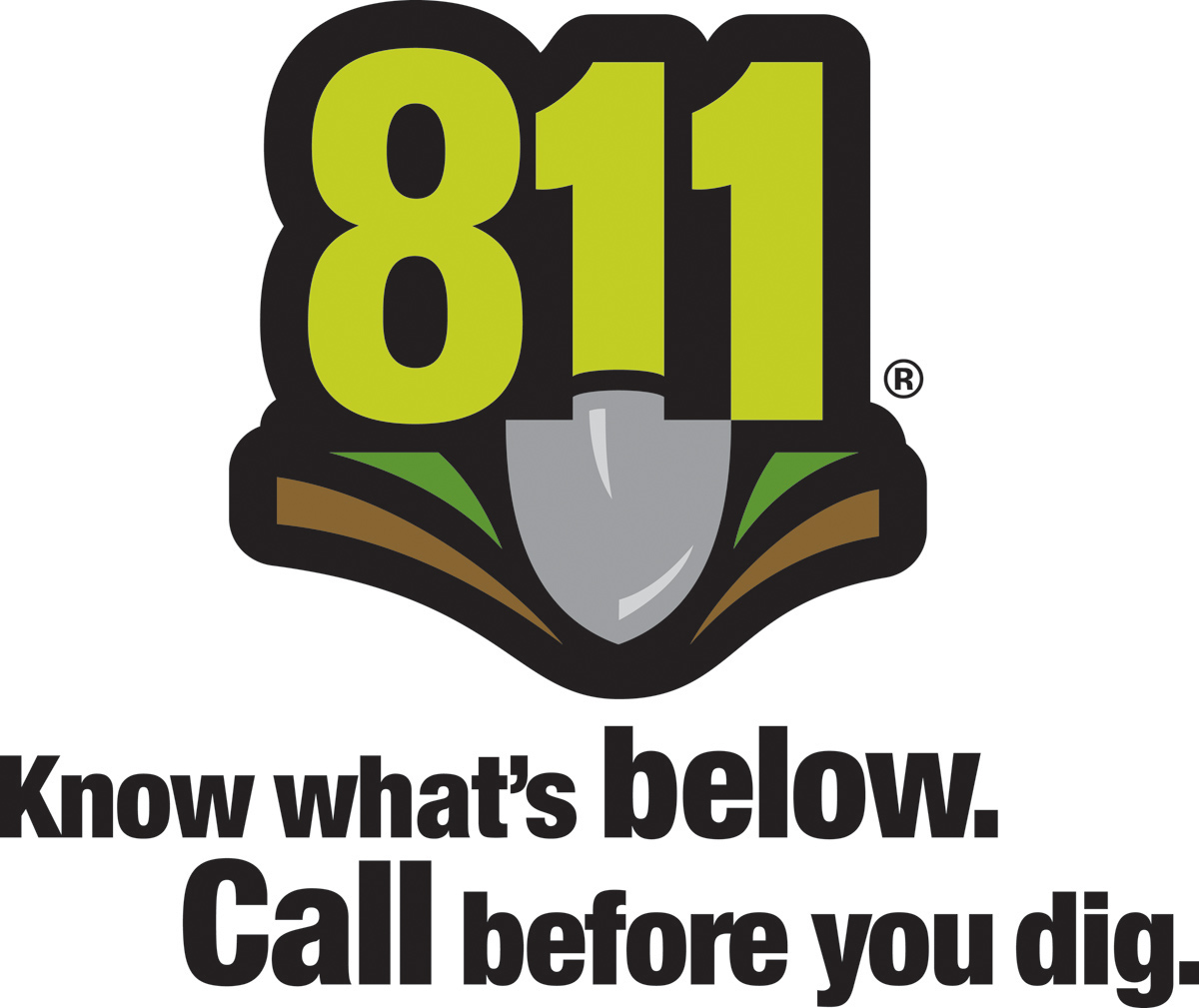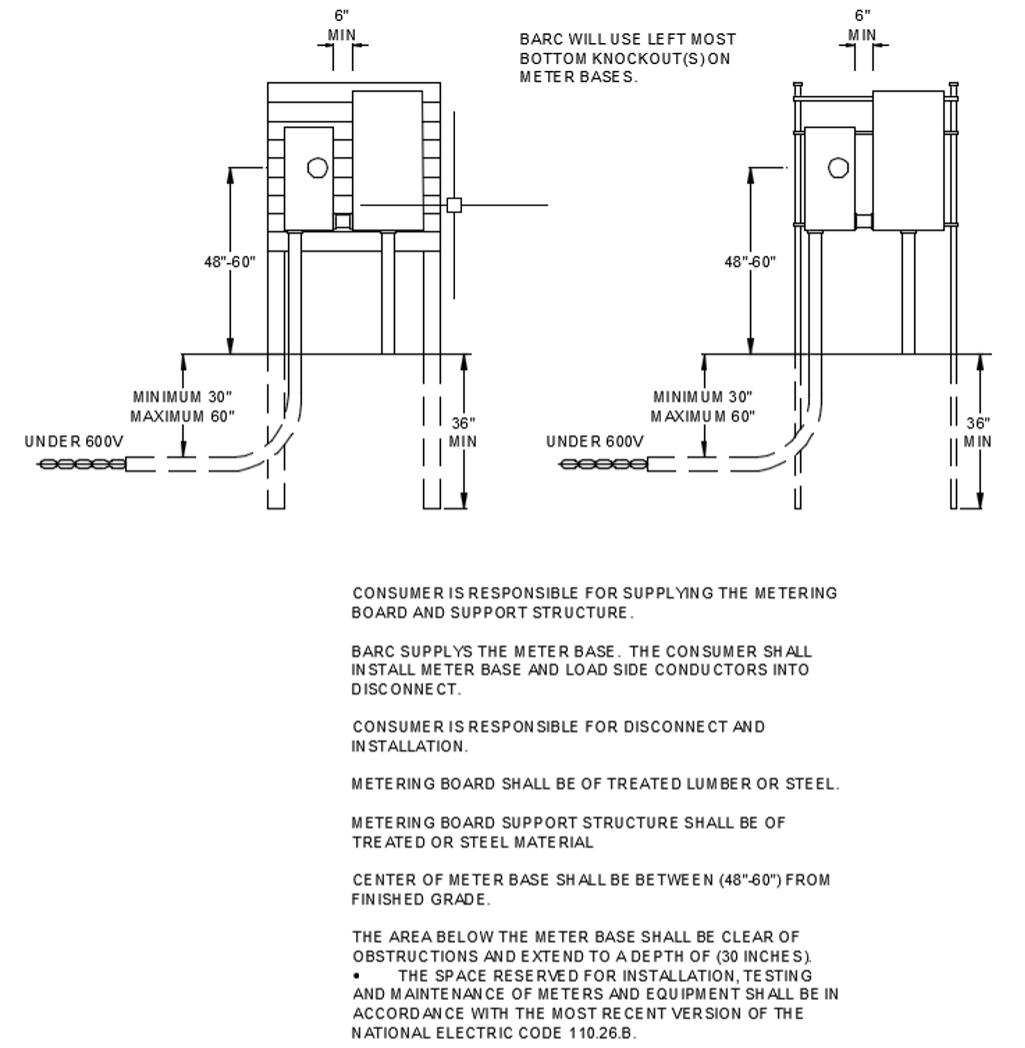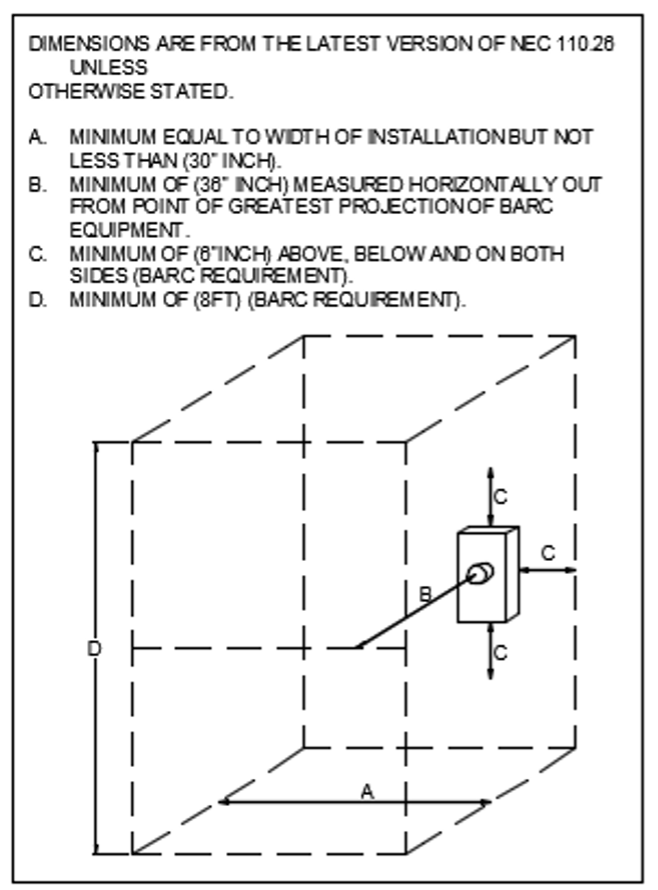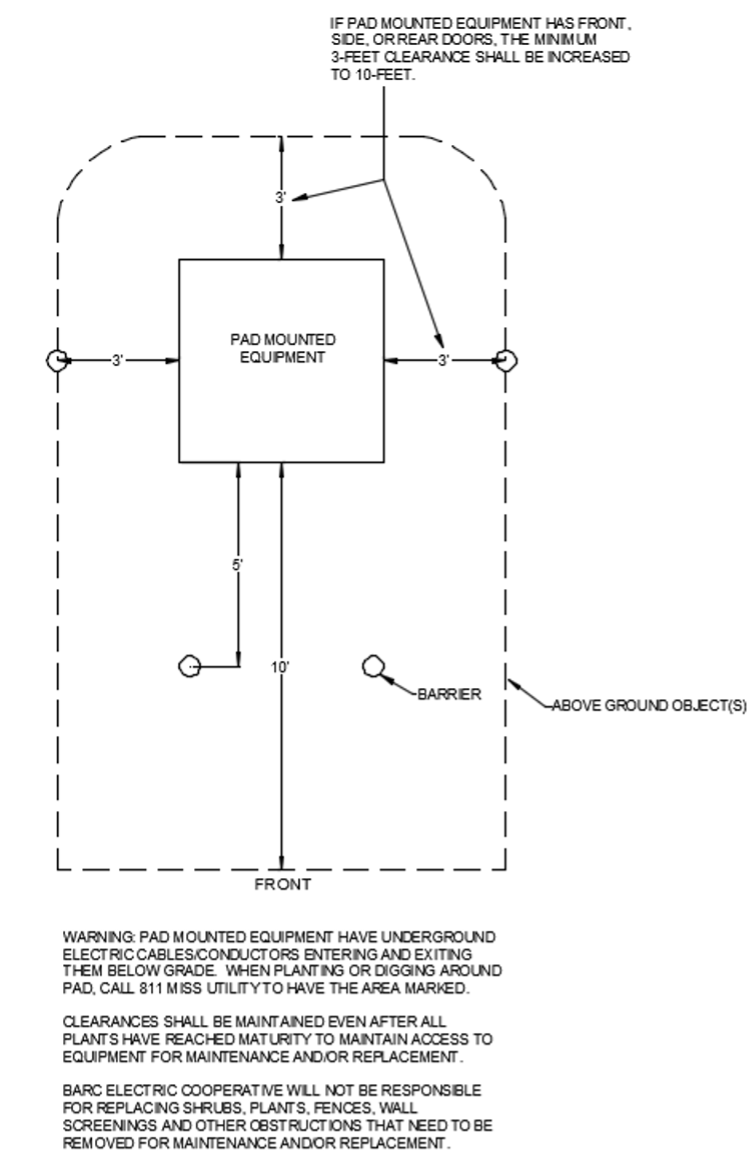Excavation and Trenching Requirements
Do not perform excavation/trenching until the route has been reviewed and approved by BARC. During the review, please have all plans showing existing, proposed and future additions located along or near the proposed underground route including but not limited to buildings, septic systems, water pumps and lines, culverts, driveways, and consumer owned underground facilities. Always CALL BEFORE YOU DIG.

Consumers providing excavation/trenching shall be required to meet the minimum standards listed below as well as the right-of-way clearing requirements appropriate for the type of line extension or service requested. The consumer shall be responsible for requesting underground locates, excavation and backfill of the trench. BARC will not turn the power on until the excavation is backfilled.
BARC personnel will inspect and approve the trench prior to installing conduit/cable and BARC personnel will witness the backfill to verify correct backfill material and techniques are followed.
Underground conductors shall not be installed under any building or permanent structure and no building or structure shall be placed over top of existing underground facilities.
- If BARC encounters such a situation the Consumer will be responsible for 100% of the cost for BARC to relocate its facilites to a location that allows maintenance and repair of such facilities. This may or may not include a new easement to be drawn and signed by the Consumer.
BARC Depth Requirements
-
Maximum depth
- 48 inches maximum working depth
-
Minimum depth of burial shall be:
- 36 inches for primary cables rated over 600V
- 30 inches for secondary cables rated 600V or less
-
Lesser depths may be used where supplemental protection is provided:
- Supplemental protection shall be sufficient to protect the cable from damage imposed by expected surface usage and shall be approved by BARC.
- If the surface under which a cable is installed is not to final grade, the cable can be placed so as to meet or exceed the 30 inch requirement once final grade is complete.
Requirements if (30 or 36 inches) is verified by BARC personnel to be unattainable:
- Any portion that crosses a surface where minimum depth cannot be accomplished, it can be designed using rigid metal conduit if a minimum 18 inches is attainable.
- Any portion that crosses a surface that cannot attain a minimum 18 inches can be designed using rigid metal conduit encased in no less than 4 inches of concrete on top of the conduit and 2 inches of concrete on the bottom of the conduit if a minimum of 12 inches is attainable.
- If a minimum of 12 inches depth is unattainable for any portion, underground construction will not be considered.
Trenching
- Bottom of trench shall be relatively smooth, undisturbed earth; well-tamped earth; or sand.
- Width of trench shall be no less than 6 inches for a trenching machine or 12 inches for an excavator bucket and no greater than 36 inches.
- Additional requirements may be necessary if other utilities, sewer or water lines, are intended to jointly use the trench; notify BARC personnel prior to excavation if joint use of trench is desired.
Trenching in Rock
- Where the excavation is in rock, the conduit shall be laid on a protective layer of clean tamped backfill.
Backfill
- All backfill shall be free of material that may damage the conduit/cable.
- Backfill material within 6 inches of the conduit shall be free of solid material or material with sharp edges likely to damage the conduit.
- Backfill shall be adequately compacted.
- Machine compaction shall not be used within 6 inches of the conduit.
Conduit
Conduit shall be gray schedule 40 PVC unless otherwise agreed upon with BARC. All elbows shall be long sweep.
- 200 amp Meter base installations shall be one run (2-1/2” inch) conduit.
- 320 amp Meter base installations shall be two runs (2-1/2” inch) conduit, or one run of (3” inch) conduit. This shall be at the determination of BARCs representative.
Joint use
If trench is shared with other utilities the following separations shall apply:
- 36 inches between gas and electric lines.
- 36 inches between water and electric lines.
- 36 inches between sewer and electric lines.
- 24 inches between communications and electric lines.
- 12 inches vertical separation at perpendicular crossings with any other utility.
Clearance of Lines Near Wells
- Maintain a minimum of 5 feet of separation from wells and/or well casings.
Clearance of Lines Near Sewers/Septic
- Maintain a minimum of 5 feet of separation from septic tanks and 10 feet from septic drain fields unless specified by BARC representative.
Clearance of Lines Near Fuel Tanks
- Maintain a minimum of 10 feet of seperation from above or below ground fuel storage tanks.
Clearance of Lines Near Swimming Pools
- Maintain a minimum of 8 feet of seperation from in ground swimming pools/hot tubs.




